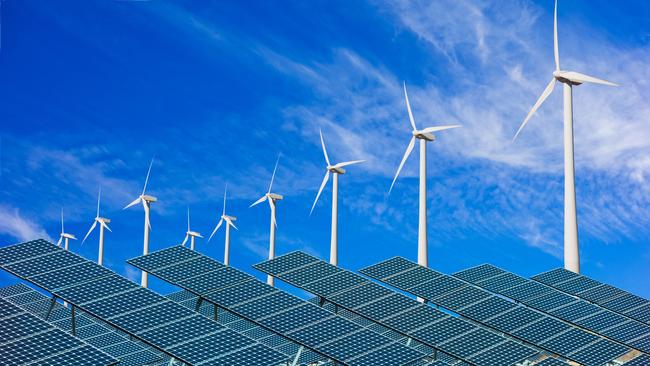
And the US is particularly anxious to foster technologies being developed in smaller entrepreneurial enterprises----where most of Australia’s new technology comes from.
Accordingly, we will see more efforts being directed across the Pacific because the US is becoming akin to a giant vacuum sucking in ideas and Australian entrepreneurial enterprises.
In The Weekend Australian my colleague Paul Kelly detailed how the US incentives ---totalling around $US1trillion ($1.56tn) and endorsed by both Democrats and Republicans --- were not only transforming the US but would have a major long term impact on Australia.
Today I want to illustrate the trend by highlighting two companies (one listed and the other unlisted) that are capitalised below $20m and have rolled up their sleeves and are now in the thick of the US excitement and productivity drive.
Back in Australia, tragically, we have the powerful so-called minister for “employment” dedicating himself to passing legislation designed to lower productivity and encourage enterprises to consider going abroad despite the obvious risks.
But sometimes the migration takes place because that’s where the technology market exists. And so the listed AML3D is taking its 3D technology to the US nuclear submarine industry and last week obtained a second contract showing that the Americans recognise its skills.
I introduced AML3D to readers last February under the heading “Australian Minnow scores nuclear subs role” so today I will start with the private company, Exergenics, where the major shareholders are identical twin brothers Iain and Tim Stewart plus outside shareholders. Exergenics focuses on improving commercial buildings’ air conditioning efficiency. Given the US is the world capital of enormous towers on the surface it would seem hard for Australian technology to break into the market for what is a fundamental service for office blocks.
The cooling and heating of most offices towers involves reticulating water around the building.
When we look down on buildings we often see cooling towers on the roof. But the engine room of temperature control is usually in the chiller/boiler room.
The manufacturers and marketers of these systems have made giant strides in improving the efficiencies of the plants. Iain and Tim Stewart don’t compete in that space but rather have developed software systems that improve the operations and the flexibility of these plants. As a result, offices use less power which lowers emissions and saves money. This usually qualifies the exercise for US government help.
The working from home boom has also provided a surprise impetus to demand for Exergetics’ software services.
Many of the air conditioning systems are designed to heat or cool the total building. But with more people working at home, vacant space was being cooled or heated. Exergetic software enabled much greater flexibility in the areas to be covered.
The technology derives from Iain Stewart’s University of Melbourne 2016 research work into commercial air-conditioning energy efficiency. His base customer was the University of Melbourne and was followed by Monash University, Mirvac and the CSIRO. Exergenics just completed a $2m capital raising to fund its US expansion with a public listing a long-term ambition.
AML3D duplicates the Exergetics US technology experience but applies it to submarines. AML3D was chosen by the US Navy because nowhere else in the world could the US obtain specialised 3D printing technology where they could buy the actual printing plant systems and incorporate them into their supply chain — a key part of the future of manufacturing.
To illustrate the attraction of using Australian technology (although the initial purchase consideration was small at $1m), the US Navy broke from its normal payment pattern and paid a substantial percentage upfront deposit, realising that such action was required to enable the Australian company to be certain of being able to fund manufacture of the first plant.
Last week AML3D signed a $2m contract to develop and metal 3D print a replacement component used in US Navy submarines, again with a substantial payment up front. This high demand component is no longer available from traditional US manufacturers, creating an opportunity to demonstrate the ability of AML3D’s manufacturing technology to overcome supply chain constraints impacting US Navy’s submarine industrial base.
In the years ahead, many smaller Australian enterprises will follow AML3D and Exergetics. Some will succeed and others will fail. But all will be inspired by the success of the West Australian burns technology, which was highlighted after the 2002 Bali bombings. The US has now embraced the Australian technology as its burns standard treatment. It now not only has FDA approval to be introduced across America, but also approvals extended to soft tissue injuries.








The enormous US investment incentives for carbon reduction and defence related technologies is attracting Australia companies with world class technology to thrust into the US.